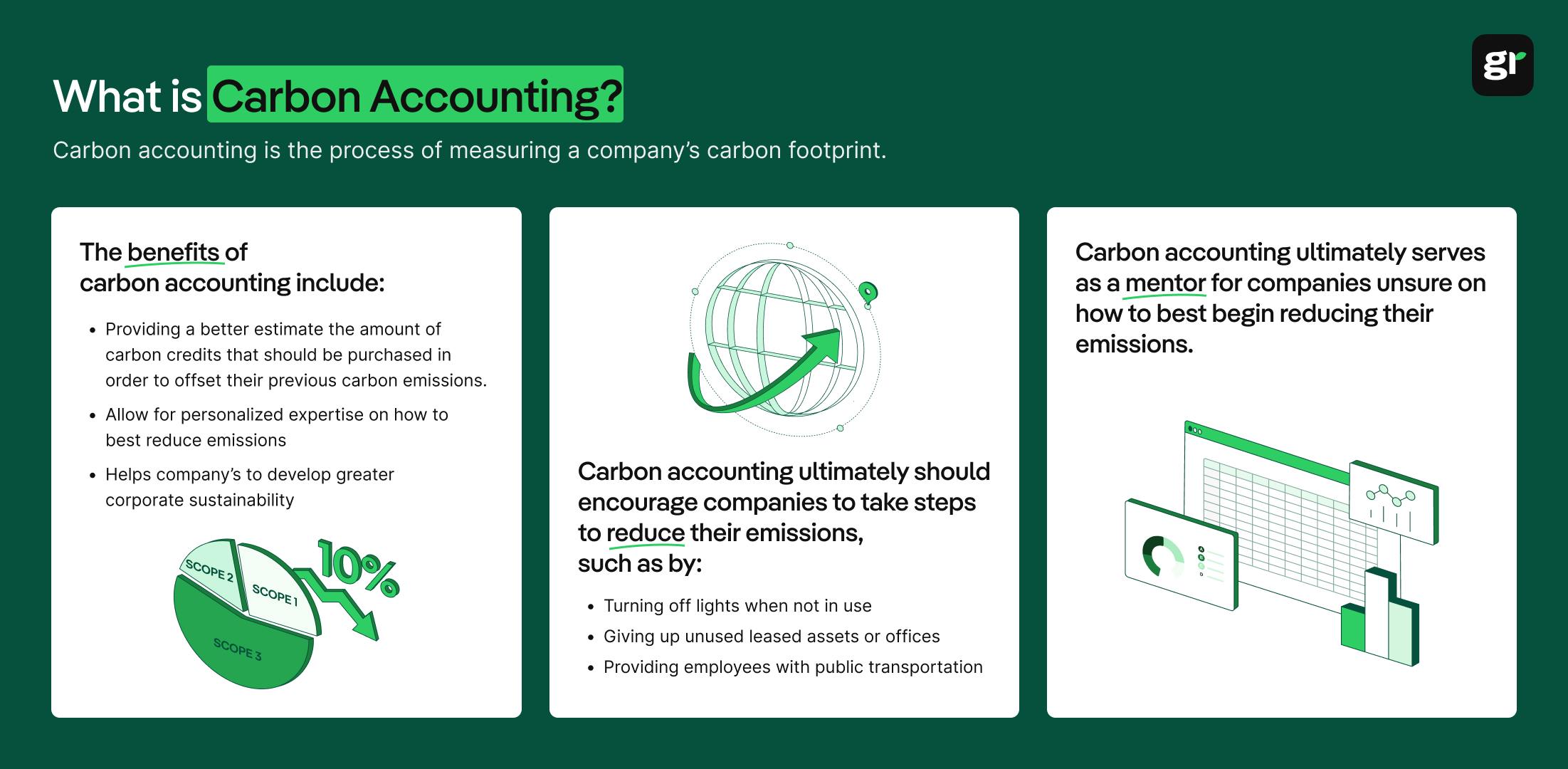
What are the 3 Pillars of Corporate Sustainability?
In this article, we'll explore what the 3 pillars of corporate responsibility are, why they're important, and how businesses can turn them into practical action.
ESG / CSR
Industries



What qualifies as scope 2 emissions
How scope 2 emissions differs from scope 1 or scope 3
Ways to effectively reduce scope 2 emissions
As climate change continues to grow as a global problem, businesses around the world are taking an interest in carbon accounting in order to discover what the primary culprits of their excessive carbon emissions are.
Carbon accounting is broken down into three well-known categories called, “scopes”. But how are scope 2 emissions different from scope 3 and scope 1 emissions?
Scope 2 emissions are the second category of measurements in carbon accounting. Scope 2 emissions include energy that is consumed or emitted from rented or leased office spaces, vehicles, or the fuel or electricity necessary to run heavy equipment like central heating or air conditioning.
Scope 2 emissions are anything that the company is required to purchase in order to fuel or operate a piece of equipment or office space within the organization. Therefore, it can be said that scope 2 emissions are the best representation of how a company seeks to source its energy sources, and more importantly – scope 2 emissions can reveal how effective a company is at actively reducing their carbon footprint.
Carbon accounting how companies figure out how many carbon dioxide emissions they are responsible for producing. Carbon accounting helps companies determine how many carbon credits they should purchase to offset their current rate of carbon emissions.
In short, carbon accounting allows companies to fairly trade between one another across the sector in terms of carbon offsets and carbon credits.


Carbon accounting is also referred to as greenhouse gas accounting.
The main goal of carbon accounting is to give all emissions a standardized value that can be represented as a financial value in the carbon market.
As more and more countries and companies around the world seek to join the net-zero movement to reduce emissions by 2050, carbon accounting has drastically grown in popularity – as it serves as he best first step for companies to understand their own emissions and therefore, seek the best ways to proceed with reducing their carbon footprint.
Carbon accounting is crucial as climate change continues to alarm life around the world, since carbon accounting is the best way for a company to begin their journey towards business sustainability and environmentally friendly habits. However, there are more benefits from carbon accounting that don’t just include reducing global emissions.
The overview cards below will reveal the importance of carbon accounting:
Carbon accounting helps companies measure real emissions across operations, supply chains, and activities.
Pinpoints which processes, suppliers, or activities create the biggest carbon footprint.
Data-driven insights allow businesses to cut emissions in the most effective places.
Many regulations require transparent carbon reporting—accurate accounting ensures companies stay compliant.
Carbon accounting provides the baseline needed to set science-based and achievable climate targets.
Transparent, credible emissions data attracts investors who prioritize climate-aligned companies.
Carbon accounting can help establish corporate sustainability, as the measures needed to reduce emissions recommended by the data provided by carbon accounting in the first place often require changes to the business model to seek more sustainable business practices like reducing plastic waste or implementing more energy efficient equipment – maybe even a carbon capture and storage system.
Carbon accounting, which is a great first step towards establishing greater transparency, can help prevent greenwashing and open new financial opportunities for companies
This is because investors and customers are becoming more interested in investing or purchasing products that seek sustainability and don’t add to the already existing problems created by climate change. Companies that use carbon accounting are aiming to be more environmentally aware, which will bode well for the business’s future financial success.

Scope 2 emissions are different from scope 1 and scope 3 emissions as they are the only category of emissions that fuel the source of other emissions.
In other words, scope 2 emissions are a representation of all the electricity or energy used to power any piece of equipment, office space, or various activities that could fall under scope 1 or scope 3 emissions.
Therefore, it could be said that scope 2 emissions is often the category of carbon accounting that reveals the largest causes of a company’s carbon footprint.
The battle cards below will reveal the differences between scope 1, 2, and 3 emissions:
The process of carbon accounting is split into three different categories – otherwise known as, “scopes”. These scope emissions seek to simplify the difficult process of determining which sources of activity produce the largest carbon footprint in a company.
There are three scopes: and each scope represents a different total of carbon emissions a category in a business model is emitting into the atmosphere.
For instance, scope 1 emissions are directly from the industrialization or vehicle use within the company. Your production line or how many cars the company has can contribute to scope 1 emissions.
Components that qualify as scope 2 emissions include anything that requires energy consumption, such as electricity needed to run a rented office space or leased vehicles, such as fuel or the electricity required to run central heating or air conditioning.
Scope 2 emissions are usually anything that is included on an energy bill – such as steam, heat, and cooling. It is any type of energy that is used by the company that is generated off-site.
While they may seem similar, scope 1 emissions and scope 2 emissions are not the same. Scope 1 emissions how much industrialization for the company itself pollutes the Earth, while scope 2 emissions are how much the electricity or energy source needed to power the equipment for production pollutes the Earth.
The difference between scope 1 emissions and scope 2 emissions is that scope 2 emissions are provided by a third party supplier and aren’t created by the company itself, but are necessary for the production line. However, the scope 1 emissions and scope 2 emissions are similar as in the company itself has full power to directly reduce the impact of these emissions – by changing the business model, energy consumption, or equipment used.


Lastly, scope 3 emissions are any various emissions that don’t fall under scope 1 emissions or scope 2 emissions. Scope 3 emissions include using raw materials, purchased goods or services, public transport used by employees, leased assets, franchises, investments, and business travel.
Scope 3 emissions are the most difficult to calculate, as they are created by a third party source that the company does not have control over – like an airline flight.
Scope 2 emissions are considered to be indirect emissions which are created from any energy that is purchased – such as electricity, steam, or heating and cooling systems. A great way to remember what scope 2 emissions are is to think of anything that your company needs to buy in order to operate something within the company: like fuel for a car or electricity for office lights or an air conditioning system.
The flip cards below will reveal the importance of scope 2 emissions:
Scope 2 emissions are important because without them, nothing in the business would have the power to operate. So, while the actual equipment or offices spaces themselves may have impacted the environment in the manufacturing process – scope 2 emissions reveal how a company is actively seeking to power their equipment in the most energy efficient and carbon reducing manner possible.

Scope 2 emissions arguably have the greatest impact on how the rate of carbon emissions a company is responsible for, because any energy or electricity necessary to power the equipment or office spaces used by the company fall under scope 2 emissions.
Think about it this way: think of your basic expenses that you need to pay for every month to survive. These expenses usually include your rent, electricity, heating, water, phone or WiFi service, and grocery bills.
Scope 2 emissions function a lot like your basic costs. There are fun things you could spend on that aren’t as typical that could increase your personal carbon footprint: like travel or purchasing beauty products that aren’t environmentally friendly – but those aren’t as representative as your daily efforts to mitigate climate change. Those expenditures are more like scope 3 emissions.
The overview cards will reveal how many day to day expenses are linked to scope 2 emissions:
Just like your home power bill, companies rely on purchased electricity — and Scope 2 measures the emissions behind that energy.
Similar to paying for heating in winter or AC in summer, businesses track emissions tied to purchased heating and cooling.
Heating water consumes energy. In companies, this energy demand contributes to Scope 2 emissions.
Just like at home, powering networks, servers, and WiFi systems uses electricity, adding to a company’s Scope 2 footprint.
Lighting, computers, elevators — all energy-powered essentials for running a workspace contribute to Scope 2 emissions.
Just like groceries are essential for survival, electricity is essential for business operations — and Scope 2 tracks its environmental cost.
Without basic elements like electricity, much of a business can’t operate at all – and when companies seek to reduce their emissions, the largest source of carbon emissions usually comes from the most frequently used equipment.
Even within your own home! Think of when people seek to purchase energy efficient washer-dryers or opt to replace their typical plastic containers with glass containers as an attempt to mitigate contributing to any more waste that isn’t biodegradable. The most commonly used items in daily life, whether personal or in the business world – is often the culprit of the most carbon producing activities the individual person or business is responsible for.
Scope 2 emissions in carbon accounting can help your company determine the greatest source of emissions, but what are the other ways you can reduce your environmental impact that aren’t specific to scope 2 emissions?
Here are 3 ways that your company can lower your overall carbon emissions and participate in the fight against climate change.
We are all guilty of using too much electricity, since it’s so easy to accidentally leave the T.V. on or unplug your phone’s charger before leaving the house. Your company should aim to be more mindful of their electrical consumption, and that can be done by making sure that inhabited spaces consume electricity when the space is left unoccupied.
Your company could save money while reducing your electrical bill and your environmental impact at the same time
In 2023, there’s really no reason to be making long-term payments for a car that uses gas, which ultimately pollutes the air more than it already is. Why choose a traditional gas-powered car when there are so many options for getting around town that are both cheaper and better for the environment?
Employees can take the metro, bike, scooter or ride shares to work to reduce their carbon footprint.
This doesn’t just have to be for work-related commutes, but for overall transportation! Opting to use transportation that doesn’t pollute the planet serves as an opportunity to save money and exercise all while helping the environment.
In a day and age where subscription services are imperative to watch T.V. shows, listen to music, or even have food delivered to your door – it’s common that you’ll end up signing up for a subscription service with the intent to use it once and never again. It’s also common to forget said subscription, and then see that you’ve been steadily losing a part of your monthly income every month because you forgot to cancel the subscription service.
Forgetting to cancel your subscription services is the exact same concept as renting spaces or equipment that aren’t being utilized to the capacity that they could be – ultimately wasting energy, resources and deterring your business from promoting sustainability.
Odds are, your company is emitting carbon emissions without even trying to through the use of miscellaneous vehicles and co-working spaces. It takes electricity to power and maintain both, and without constantly keeping an inventory of which spaces and materials are no longer being used – it’s easy to accidentally emit more emissions than planned.
If your company can allot the time necessary to determine the rented vehicles or co-working spaces that aren’t being used to their maximum potential, it could be a game-changer to reducing your carbon footprint and aiding in the fight against climate change.
If reading this article about scope 2 emissions has made you interested in reducing your carbon emissions to further fight against climate change – Greenly can help you!
Greenly can help you make an environmental change for the better, starting with a carbon footprint assessment to know how much carbon emissions your company produces.
Click here to learn more about Greenly and how we can help you reduce your carbon footprint.